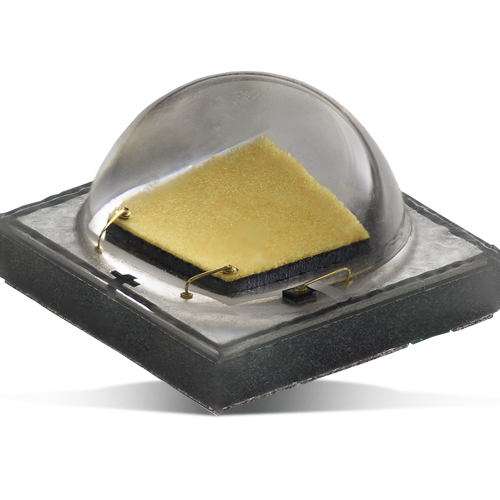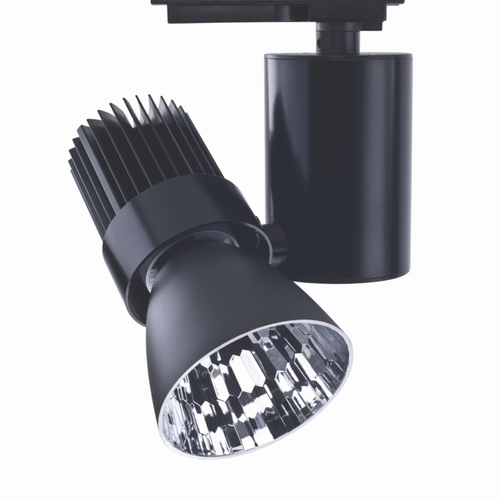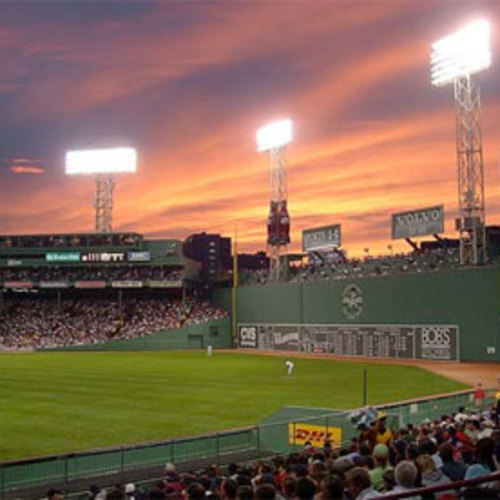
Last week we took a look at fluorescent lighting, which is dramatically reducing our energy use for illuminating indoor spaces. This week we’ll cover mercury vapor lighting, which is the most common outdoor lighting in many of our towns.
Mercury vapor is the oldest type of high-intensity discharge (HID) lighting. Light is produced when electric current is passed through mercury vapor in a sealed glass bulb. I’ll cover other HID lighting technologies, including sodium and metal halide, next week.
Because mercury vapor produces light mostly at the ultraviolet (UV) end of the spectrum, the light from mercury vapor lamps—at least when they are new—is bluish in color and it doesn’t show off colors very well. In lighting tech-speak, it has a high color temperature (typically 5,600 to 6,400 kelvins) and a very low color-rendering index (CRI)—typically between 15 and 50. (For an explanation of these terms, see last week’s column.)
Compared with newer HID lighting, mercury vapor isn’t very energy efficient. The “efficacy”—or amount of light produced per unit of electricity consumed—is 20-60 lumens per watt. This is better than incandescent lamps (about 15-20 lumens per watt), but significantly lower than other HID lighting.
In fact, mercury vapor lighting is being phased out in the U.S.. The Energy Policy Act of 2005 banned the manufacture and sale of these products, effective in January, 2008. So it makes sense to replace older mercury vapor lighting with newer HID lighting, right?
Well, it can get complicated, as I learned a few months ago when the Dummerston Energy Committee sought to save energy in the town by replacing the old mercury-vapor lights along West Street in West Dummerston with newer metal-halide lights. It’s a story that illustrates the challenges one can face in trying to do the right thing.
A resident (and amateur astronomer) living across the West River from the village had approached the Dummerston Selectboard and Energy Committee about replacing the mercury vapor street lights because they created glare or light pollution, which affected his views of the night sky. I was interested, because it was an opportunity to reduce energy use in the town. We contacted Central Vermont Public Service Company (CVPS) about replacing the older lights with something better and they were very supportive, offering metal halide lights in either full-cutoff or semi-cutoff fixtures.
As with most outdoor lighting along streets, the utility company owns and maintains the light fixtures and charges a monthly fee to the town based on the projected electricity use and maintenance cost; Dummerston pays about 44¢ per fixture per day for the 100-watt mercury-vapor lamps and would pay the same for the 50-watt metal halide replacements.
We decided to test one of each of these fixtures before converting all dozen of the lights. Well, the neighborhood angrily rebelled and was about ready to run me and the Dummerston Energy Committee out of town. Part of the problem was that the lights were a lot brighter. Even though the new lamps used half the electricity, they were brighter—in part because, as mercury vapor lamps age, their light output drops. The light from the new lamps was also a lot whiter—a property of metal halide lamps. I think some of the complaints would have happened had we simply replaced the old lamps with new mercury vapor lamps, because the new lamps would have been both brighter and bluer in color. (Along with getting dimmer, as mercury vapor lamps age they become yellower, or softer.)
More significantly, the fixture design was objectionable. Cut-off fixtures are designed to deliver more light downward, with less escaping horizontally as light pollution. Residents at one house, just across the street from one of the test fixtures, complained because the light shone into the house—part of the problem was that the electric pole on which the fixture was mounted was tilted away from the house, so the fixture’s light was directed somewhat upward. (I would have complained too!)
For another resident, the concern was that the illumination didn’t extend far enough along the street. Too much of the street was “cut off” from the light, so there was concern about safety. While the light pollution was largely eliminated, so was the more diffuse light that residents had gotten used to.
When we, including CVPS, looked for an older-style, non-cut-off, fixture for the new 50-watt metal halide lamps, we found that such a fixture doesn’t exist. Most outdoor lighting designs are calling for fixtures that reduce horizontal glare, and manufacturers don’t make the older-style fixture that disperse the light more widely. Cut-off fixtures work fine when fairly close together, but in West Dummerston we only have one fixture on every second or third utility pole. The new option just didn’t work.
To make matters worse, once older mercury vapor lamps are removed, they are supposed to be replaced with the newer, legal lighting. For a while it appeared that by replacing the mercury vapor lights with something different we couldn’t go back. Fortunately, since our replacements had just been a test, CVPS was able to re-install the old ones. So we’re back to the drawing board, when it comes to both light pollution and energy savings. As those mercury vapor lamps and ballasts fail, they will have to be replaced with something. We’re hoping that, by then, there will either be more metal halide fixtures to choose from, or newer, affordable LED fixtures that can provide what we need.
Weekly Newsletter
Get building science and energy efficiency advice, plus special offers, in your inbox.















One Comment
Energy Efficient Induction Street Lighting
Sir,
After an exhaustive study, PSE&G of New Jersey has selected Induction Street Lights from USLT of California to replace over 90,000.000 old Mercury Vapor street lights all over New Jersey.
See our website uslightingtech.com
These fixtures last 100,000 hours - that's 20 years, are guaranteed for 10 years, the technology has been around 100 years, and use less than half the energy of Mercury Vapor (or HPS).
I am the Pittsburgh representative for USLT. You may email me, or just go on our website if you would like more information.
Sincerely,
Stephanie
Log in or create an account to post a comment.
Sign up Log in